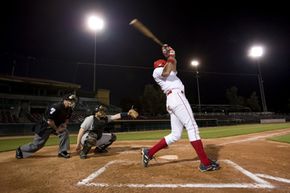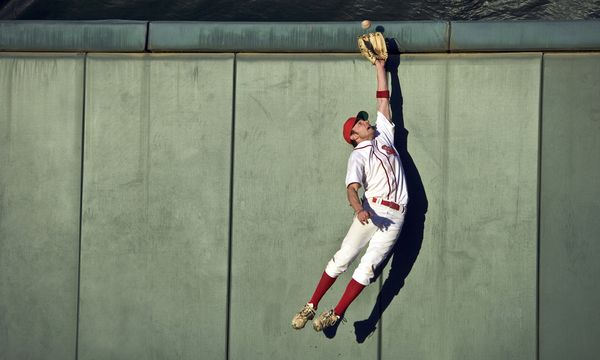Unless you're a baseball umpire or true baseball aficionado, you may never have heard of the term "foul-tip." And even if you have, you may be confused as to exactly what it is. A foul-tip ball is a ball the batter nicks or tips with his bat, causing it to travel directly into the catcher's hands or mitt, where the catcher legally catches it. Foul-tips are always strikes, not fouls -- their name is one reason they can be confusing. And they're always live balls [sources: MLB, Joel].
It doesn't seem too difficult of a concept, but let's add some further information and examples to make sure you understand [sources: MLB, Joel].
Advertisement
- To be considered a foul-tip, the ball must travel directly into the catcher's hands or glove, and be legally caught. If the ball flies into the catcher's chest protector, then drops into his glove, that's not a foul-tip. It's a plain old foul. Similarly, if the batter nips a ball, it travels straight and direct into the catcher's hands and he catches it, then drops it, it's not a foul-tip, either -- just a foul. Finally, if a nicked ball hits the catcher's mitt and then his chest, bobbling around a bit before the catcher has a firm grasp on it, it's still a foul-tip since it hit his mitt first and he caught it.
- Major League Baseball rules state foul-tips must go "straight and direct from the bat to the catcher's hands" So, if there is any perceptible arc to a ball that's lightly tapped, it's not a foul-tip. Again, it's a regular foul.
- Because any ball deemed a foul-tip is a live ball, all of the rules of live balls apply, meaning runners can advance to the next base or steal -- provided the foul-tip constitutes strike one or strike two. If it's the third strike, the batter is out and runners can't advance or steal.
- It's very possible you've never seen a foul-tip, because they're pretty rare; catchers usually aren't able to snag nicked balls, nor do the balls typically travel straight to them.
A final note: Umpires don't call out foul-tips, or at least they shouldn't. First, if an umpire does so, players may stop play when they hear the word "foul." And second, a foul-tip ball is a live ball. Just as an umpire doesn't sing out, "Fair ball!" he shouldn't shout out, "Foul-tip!" Giving the foul-tip sign is sufficient [source: San Diego Adult Baseball Umpires]. The umpire stands, puts his arms together, with his right arm on top. Then, he slides his right arm off and straightens it upward to his side before giving the strike hand gesture [source: California District 8 Little League Umpires].
Advertisement


